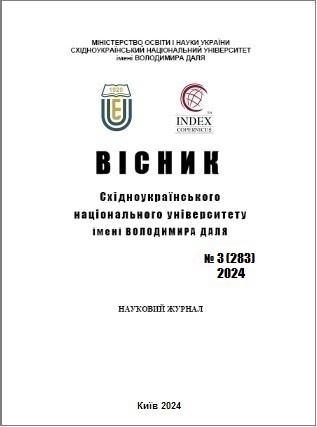Тhe influence of the working surface roughness of the laval nozzle on the gas flow parameters
DOI:
https://doi.org/10.33216/1998-7927-2024-283-3-31-37Keywords:
gas mixture, oil and gas industry, cement industry, cooling, Laval nozzle, Mach number, gas temperatureAbstract
Cooling of gas mixtures is widely used in varioustechnological processes in the chemical, oil and gas,cement and other industries. There are quite a fewdifferent ways of cooling, but they are energy-consuming,require bulky and complex equipment, etc. One of theleast energy-consuming methods is the method of gascooling using a Laval nozzle. In the article, a threedimensionalmodel of the Laval nozzle was developedand the influence of the roughness of the internalsurfaces on its operation was investigated usingsimulation modeling. At the same time, the compositionof flue gases, their temperature, pressure and flow at theentrance to the nozzle and pressure and temperature atthe exit from it were taken into account. For the study, aparametric study was applied, namely "analysis ofpossible options", which is implemented in theFlowSimulation program, which is a module of theSolidWorks program. The application of a parametricstudy made it possible to change several parameters (gasflow rate at the nozzle inlet and the roughness of the innersurface of the nozzle) for the analysis of selected flowparameters set as targets (gas mixture temperature,Mach number). In order to increase the accuracy of thesimulation results obtained, the mesh of finite elementswas optimized so that the smallest elements are locatedclosest to the surfaces of the nozzle with which the gasflow is in contact. As a result of simulation modeling, itwas established that the greatest decrease in thetemperature of the gas mixture is achieved at a Machnumber close to 3. With further increase in the flow rateof the gas mixture, its minimum temperature remainsalmost unchanged. An increase in the roughness of theinternal surfaces of the nozzle leads to a slight increasein temperature. The use of the developed Laval nozzledesign for cooling industrial flue gases is also possible atMach numbers that are much lower than 3. In this case,the temperature at its exit will rise slightly, but thepressure at its entrance will decrease. This is anappropriate use of the nozzle, taking into account thepeculiarities of technological processes in production,since it is possible to use less expensive equipment forsupplying the gas mixture (do not use complex andexpensive compressors), or, if possible, to take the gasmixture from the pipeline already at the requiredpressure.
References
1. Патент на корисну модель № 152837, Україна,В03С 3/02. Спосіб виділення рідини і механічнихчастинок з газового потоку / Крижанівський Є.І.(UA); Лях М. М. (UA); Михайлюк В. В. (UA); Маковійчук М.В. (UA); Кучірка Ю.М. (UA);Витриховський Є.А. (UA) – u202200306; Заявл.25.01.2022; Опубл. 19.04.2023, Бюл. № 16. 4 с.
2. Довідник з ресурсоефективного та чистого виробництва. цементна промисловість/ С. В.Плашихін. К.: Центр ресурсоефективного та чистого виробництва, 2020. 96 с.
3. Cai, Y., Liu, Z., & Shi, Z. (2017). Effects ofdimensional size and surface roughness on serviceperformance for a micro Laval nozzle. Journal of Micromechanics and Microengineering, 27.https://doi.org/10.1088/1361-6439/aa6552.
4. Vlassov, D., Vargas, J., & Ordonez, J. (2007). The optimization of rough surface supersonic nozzles. Acta Astronautica, 61, 866-872. https://doi.org/10.1016/J.ACTAASTRO.2007.01.068.
5. Cai Y, Liu Z, Shi Z, Song Q, Wan Y. Optimum endmilling tool path and machining parameters for microLaval nozzle manufacturing. Proceedings of theInstitution of Mechanical Engineers, Part B: Journalof Engineering Manufacture. 2017;231(10):1703-1712. doi:10.1177/0954405415608601
6. Chen M, Baby R, Dillard S, Lee YT and Ekkad S(2022) Design and test a converging and de Laval nozzle using additive manufacturing. Front. Aerosp.Eng. 1:951987. doi: 10.3389/fpace.2022.951987
7. Лях М.М., Михайлюк В.В., Яцишин Т.М., Витриховський Є.А. (2022). Дослідження впливу геометричних параметрів сопла Лаваля на зміну температури потоку газу. Прикарпатський вісник наукового товариства імені Шевченка. Число,17(64), 108-117. https://doi.org/10.31471/2304-7399-2022-17(64)-108-117
8. Flow Simulation. 2020. Technical ReferenceSolidWorks Flow Simulation 2021.https://www.cati.com/wpcontent/uploads/2021/04/swflow2021-technicalreference.pdf (Accessed: 29 May 2024).

